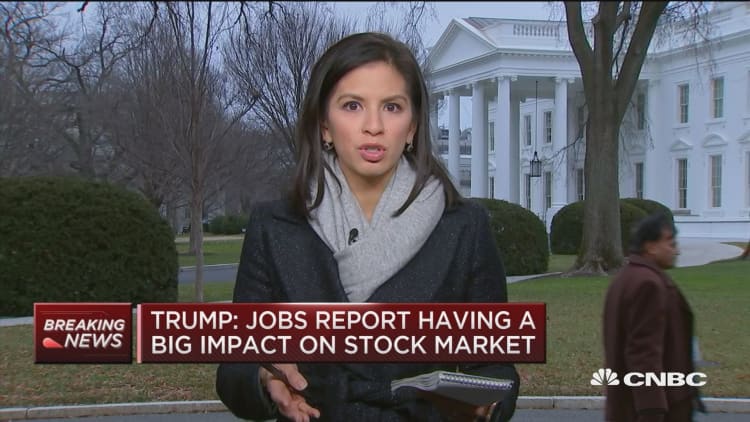
President Donald Trump said he was prepared to continue the partial government shutdown for "months or even years" — and as the closure drags into its third week, he's getting closer to making good on that threat.
The stalemate between Trump and congressional Democrats over a spending package to fund nine government agencies was in its 17th day Monday, making this shutdown the third-longest on record, and Congress is out of session until Tuesday.
Trump has dug in on his demand that any deal to end the partial shutdown must include more than $5 billion toward the construction of a barrier along the U.S.-Mexico border. Democrats, led by House Speaker Nancy Pelosi and Senate Minority Leader Chuck Schumer, have refused to allocate any money for a wall.

Trump now says he wants a "steel barrier," rather than the concrete wall he has repeatedly called for. "I think we're probably talking about steel because I really feel the other side feels better about it," Trump told reporters Friday.
The amount requested would fund only about 234 miles of the nearly 2,000-mile border, according to a letter sent to Capitol Hill by the Office of Management and Budget on Sunday.
In prior negotiations with Trump, Democrats had agreed to some border wall funding as part of an ultimately scuttled deal to protect the so-called Dreamers, people who were illegally brought to the U.S. as children. But while the leaders of the party have met multiple times in the past week with Trump and his administration, they say they won't validate Trump's "temper tantrum" over a border wall this time around.
Here's what you need to know to stay up to date on the shutdown.
Weekend meeting
With both sides dismissing each others' positions as nonstarters, administration officials including Vice President Mike Pence and Trump son-in-law Jared Kushner met with Democrats over the weekend in an attempt to push negotiations forward.
Despite Trump's optimistic tweet Saturday morning proclaiming that there was "Great support coming from all sides for Border Security (including Wall)" ahead of the weekend talks, the gulf between the two sides appeared as wide as ever Monday.
Emergency powers
After a lengthy meeting at the White House on Friday, Trump confirmed to reporters in the Rose Garden that he had considered using extraordinary powers, such as by declaring a national emergency, to redirect Defense Department money toward wall construction.
"I could do it if I wanted," Trump said, adding that he would not need to consult Congress before doing so. While a president can declare an emergency, the specific powers available to him in such an event are unclear, legal scholars told NBC News.
The possibility of circumventing Congress altogether was still on Trump's mind Monday morning. He tweeted a quote from House Armed Services Committee Chairman Adam Smith, D-Wash., that appeared intended to support his view that he could declare a national emergency unilaterally.
"No doubt, but let's get our deal done in Congress!" Trump added to Smith's quote.
Federal workers hurting
Although only about a quarter of the government is shut down, it has direct consequences for hundreds of thousands of federal employees.
More than a projected 400,000 employees are working without receiving a paycheck, and hundreds of thousands more are furloughed from their departments, such as NASA and the Commerce Department.
As the shutdown drags on, stories of federal employees increasingly relying on credit cards and other alternative means of payment are likely to grow.
Trump on Friday said that the employees not receiving their week's pay would support his quest for a border wall if asked. "I think if you ever really looked at those people, I think they'd say, 'Mr. President, keep going, this is far more important.'"
'Months or even years'
Following the roughly two-hour meeting at the White House on Friday, Schumer said Trump had threatened that he was willing to continue to keep the government partially shuttered "for a very long period of time — months or even years."
Trump confirmed Schumer's claim when he addressed reporters shortly afterward. While he and his team have described the Friday meeting and the weekend talks as "productive," Democrats have offered more pessimistic takeaways from the negotiations.

Correction: This story incorrectly stated that the Defense Department has experienced furloughs. It was the Commerce Department.


